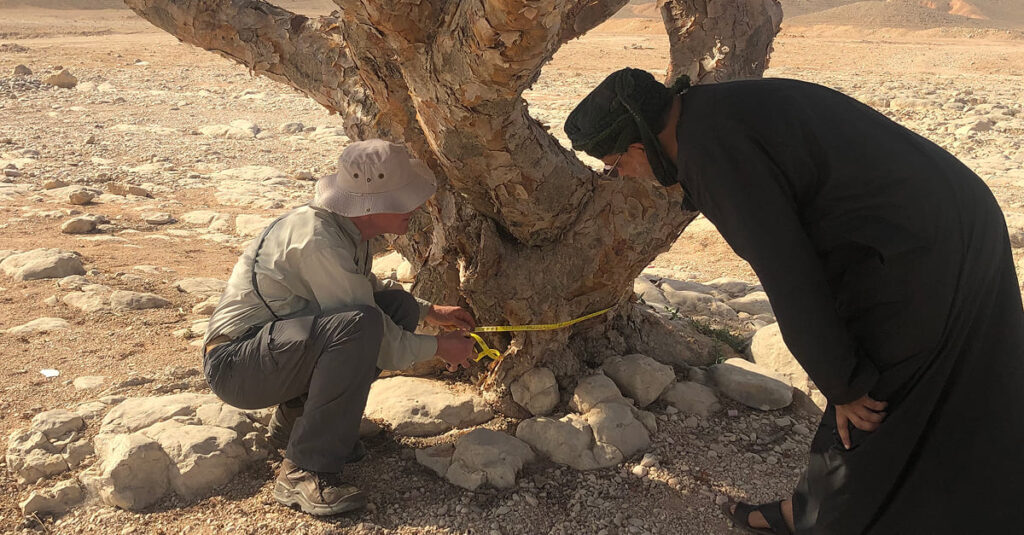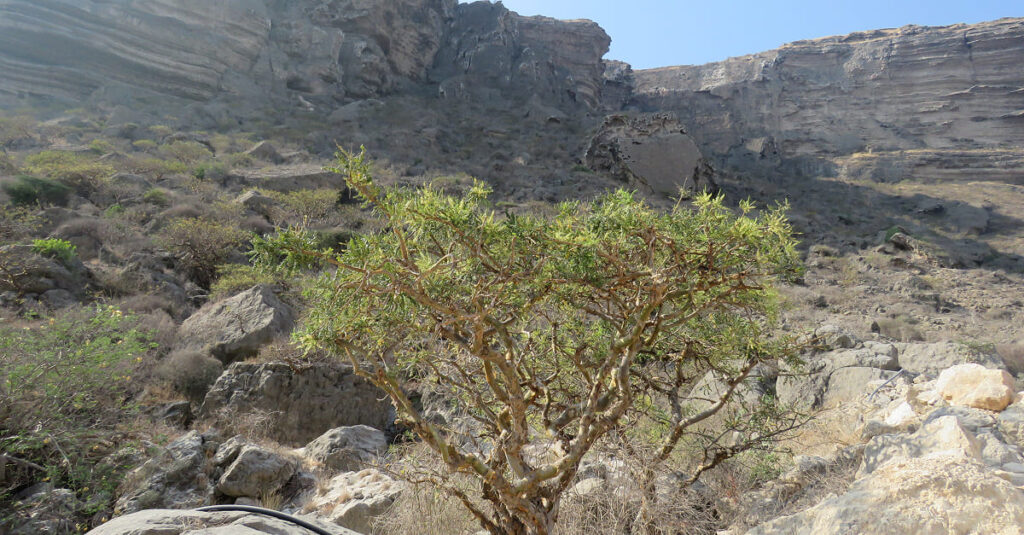
MUSCAT – A landmark scientific study has confirmed that Oman’s frankincense trees — renowned for producing an aromatic resin deeply woven into the nation’s historical and cultural legacy — do not face widespread decline in the southern reaches of the Sultanate, despite facing a variety of environmental and human-induced threats.
This encouraging discovery stems from the first-ever comprehensive conservation assessment of Boswellia sacra, the botanical name for these iconic trees, in their native mountainous habitats of Dhofar Governorate. The research initiative was led by the Environment Society of Oman (ESO), in collaboration with the Environment Authority, Wageningen University & Research, FairSource Botanicals, and Mendel University in Brno. The project received initial funding support from the British Foreign, Commonwealth & Development Office (FCDO) in Oman.

Launched in 2022, the study examined the population dynamics, ecological pressures, and natural regeneration patterns of Boswellia sacra across its known distribution in Dhofar. A scientific paper published earlier this year reported that while the trees show diverse population structures and regeneration rates, there is no evidence of a widespread population decline. These findings are an important step forward to protect frankincense trees not only as a cultural and spiritual symbol of Oman’s ancient incense trade, but also as the cornerstone of a thriving domestic industry centered around incense and related products. Of the roughly 24 species in the Boswellia genus worldwide, Boswellia sacra Flück. — a deciduous tree of modest stature — is native to southern Arabia (Oman and Yemen) and Somalia. In Oman, the species is found across Dhofar growing from sea level to elevations as high as 1,774 meters in the mountain ranges.
However, the trees are not immune to threats. Overgrazing, particularly by camels, poses one of the most serious risks to sapling survival. Additional challenges include insect infestations, pest attacks, unsustainable resin harvesting, nearby mining activities, and increasingly erratic weather events — all of which can impact tree vitality and regeneration. While the study dispels fears of an imminent population collapse, the researchers caution against complacency. The threats facing Boswellia sacra are complex, varying by location and season, and influenced by ecological, social, and political dynamics. To be effective, conservation strategies must therefore address the full socio-ecological context, the paper emphasises. In a statement, The Honorable Dr Amor Al Matani, President of ESO’s Board of Directors, hailed the successful completion of the study as a pivotal step forward. “ESO’s role in driving this landmark study is a testament to its long-standing commitment to safeguarding Oman’s frankincense heritage, given the priceless cultural and ecological value associated with this aromatic resin. Our sincere thanks to the Environment Authority and all the international partners who helped bring this initiative to life.”
Ali Bin Salem Bait Said, Director of the Office for the Conservation of the Environment, at Environment Authority office in Dhofar, added: “This study has brought together local and international institutions in a first-of-its-kind collaboration to deliver science-based insights into the health of our frankincense populations. By challenging widely held assumptions about the species’ decline, the study shows that international conservation concerns should recognize differences between frankincense species and between their countries of origin, and the measures taken by each country.”
The study can be viewed on the following link:

0 Comments